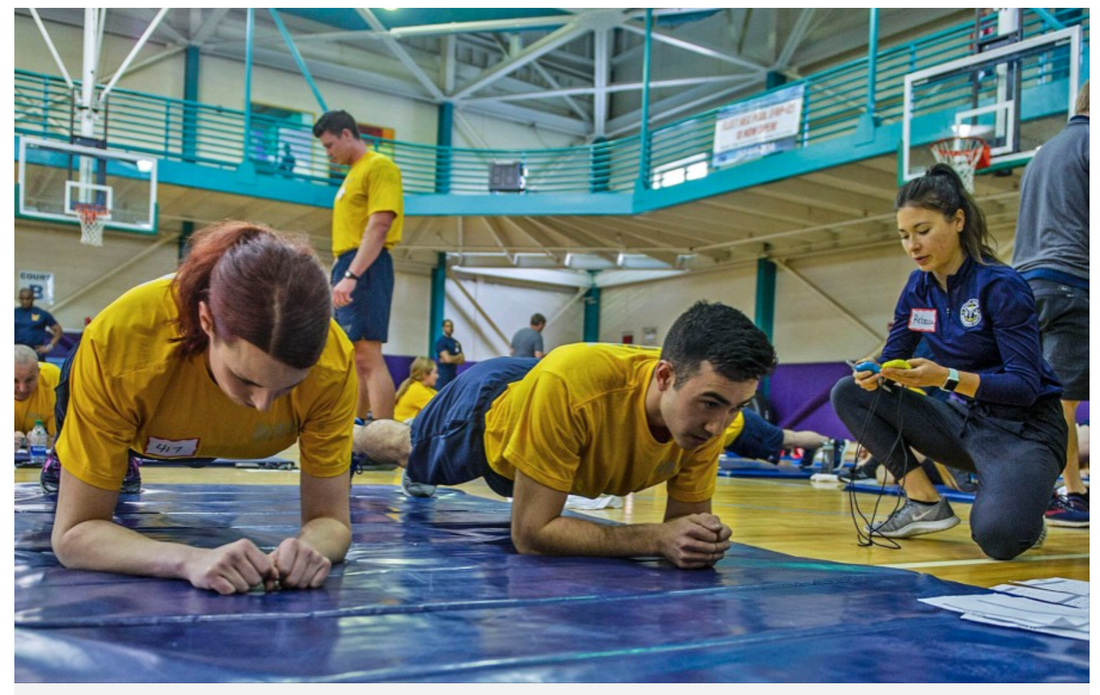
United States Military Making CORE Changes in Physical Fitness Standards
 Photo by: ERIKA L. KUGLER/U.S. NAVY
Photo by: ERIKA L. KUGLER/U.S. NAVY
The United States Navy announced in May of 2019 that they would be adopting planks in place of curl ups and sit ups as part of the Navy’s Physical Readiness Test (PRT). In November 2020, the Navy went full steam ahead and released the new PRT guidelines and requirements which include the forearm plank.
This is the biggest change that the Navy has made in years to their PRT. In the past, sailors needed to perform as many curl ups/ sit ups that they could do in a 2-minute period. That is now being replaced with the forearm plank. To qualify for full marks (100 points) the Navy’s gender-neutral plank requirements for a sailor between the ages of 17-19 is 3 minutes and 40 seconds, with a minimum of 90 seconds to earn a satisfactory score. The time for an outstanding score decreases by 5 seconds with each age group.
Why is the Navy changing over to planks?
The Navy is adding the plank in an effort to focus on more functional movements of sailors. Core strength is used daily in everyday life. A sailor’s everyday life could be pulling the line to moor the ship or carrying a box to the storage room. Stabilization of the core is where all that power is drawn from.
Planking is a safer alternative to the curl up and sit ups, which have been part of the PFT since the 1980’s, since curl ups and sit ups can aggravate lower back injuries. The plank is also more relevant to what sailors do every day. This change fits into the Navy’s emphasis on physical, spiritual and mental well-being. The Navy’s goal with physical readiness is fitter, healthier sailors who can accomplish the mission easier or be more successful.
If you have a Stealth Core Trainer, think of all those twists you do on your board. That would be a similar movement to pulling the line to moor the ship. By using your Stealth, little did you know you were training for the Navy; all while having a fun and enjoyable time.
The Navy isn’t the only branch that is adding the plank into their physical fitness test. The Army’s combat fitness test (ACFT) is also adding an option to plank. The Marine Corp is adding the option to the PFT as well.
The Army’s ACFT currently requires soldiers to perform leg tucks. If soldiers can’t quite do one leg tuck, they will then be given the option to hold a 2-minute forearm plank. Soldiers need to have core strength; they will use the plank to build that core strength.
Core strength is a focus area for the service. Lower back injuries are the most common, debilitating, and costly injuries to the Army. The Army’s ACFT uses leg tucks to train the core, hips and shoulders to reduce those injuries.
The Marine Corp is trying to stay the fittest branch by also adding the option of planking to their PFT. Marines have the option to perform normal crunches or to hold a plank. All marines will be graded the same regardless of gender or age. For a perfect score, a marine must hold a plank for 4 minutes and 20 seconds; a minimum score to pass is 1 minute 3 seconds.
How will the Sailors, Soldiers and Marines train for these new requirements?
As a former Navy wife and now a Navy and Army Mom, I envision rows of men and women down in a forearm plank position. The room is quiet and full of determination to be the best. BUT I also hear crickets chirping because the plank can be one of the most boring time stopping exercises.
I’m pretty confident that I can already meet the requirements for outstanding in the plank portion of all the military fitness tests. I’ll be thinking of them all as I work on my own core strength with my Stealth Core Trainer while playing games and having fun.
It’s been 10 months since I’ve seen my sailor who is also my youngest child. I am sending a Stealth Core Trainer to him so he can game his core and be even more outstanding than he already is. I am sure he will share it with his shipmates, and when PFT scores are reviewed they will wonder why all the sailors in this particular group scored so high.
~Jennifer S.
For more detailed information of the military fitness test follow these links below: